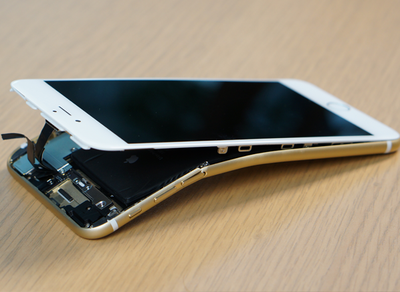Just a day after Apple issued its first statement regarding the ongoing complaints that the iPhone 6 Plus bends in user pockets, Consumer Reports has released its test results for how "bendable" Apple's new phones are. In summary, the results show that the new phones are far stronger than what some testimonies have suggested in the past few days.
To test the phones, Consumer Reports put them through the "three-point flexural test", which has the phone supported at two ends and has pressure applied at a third point, alongside competitors like the HTC One (m8), Samsung Galaxy Note 3, LG G3 and iPhone 5.
Consumer Reports' tests pushed the iPhone 6 and 6 Plus much further than [Apple's test of 55 pounds of force]. We started light, applying 10 pounds of force for 30 seconds, then releasing the force. Then we upped the force in 10-pound increments, noted when the phones first started to deform (that's what our engineers call it) and stopped the test for each phone when we saw the screen come loose from the case.
The results showed that the 6 Plus was actually stronger than the iPhone 6, starting to deform at 90 pounds of force and having its screen and case separate at 110 pounds of force. The iPhone 6 started to deform at 70 pounds of force and started coming apart at 100 pounds of force. The HTC One (m8) performed the worst in Consumer Reports' test, deforming at 70 pounds of force and coming apart at 90 pounds of force.

The LG G3 deformed even at low levels of force and started to come apart at 130 pound, while the iPhone 5 deformed at 130 pounds of force and came apart at 150 pounds. Similar to the LG G3, the Galaxy Note 3, deformed under even low levels of force and came apart at 150 pounds. Consumer Reports notes that while other phones, like the iPhone 6 and HTC One, were still functioning after deforming and coming apart, the Note 3 stopped working right away.
Overall, the magazine notes that while none of the phones they tested were indestructible, all devices tested should hold up fine under everyday use.

















